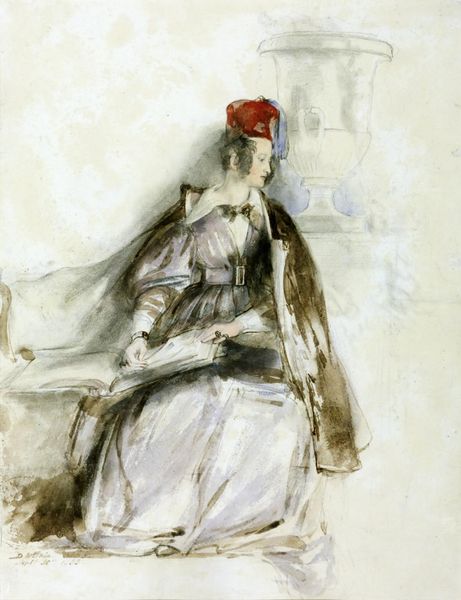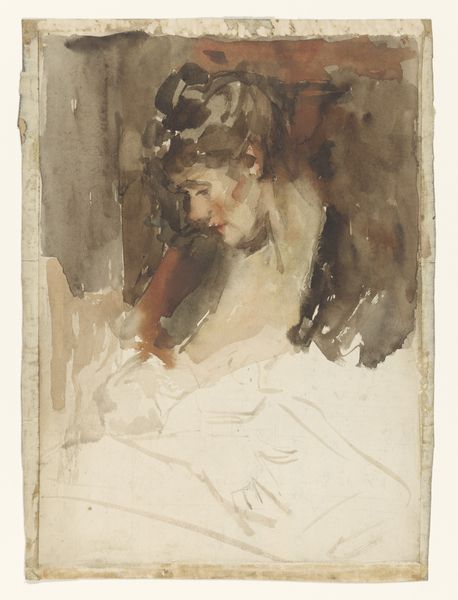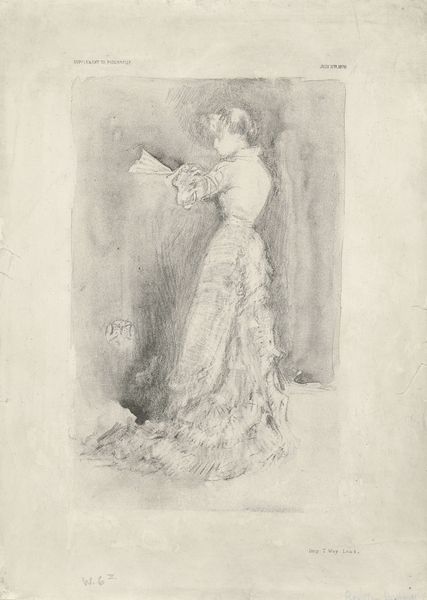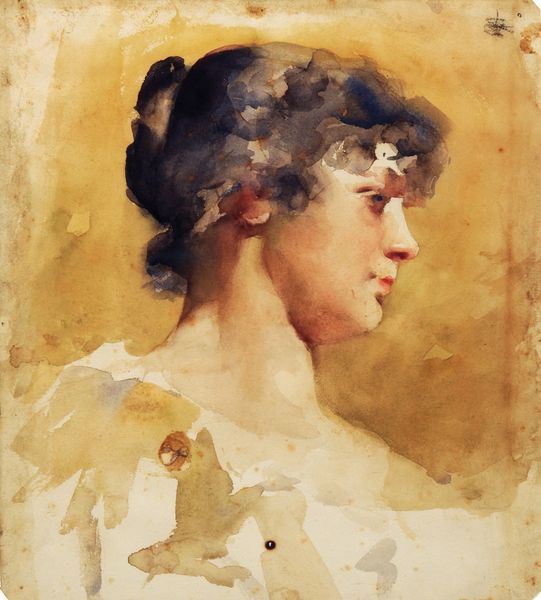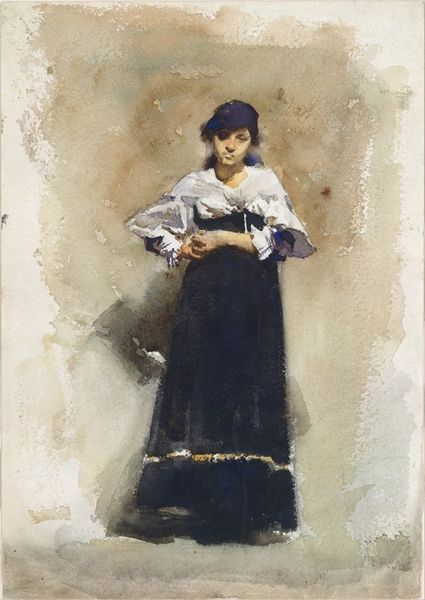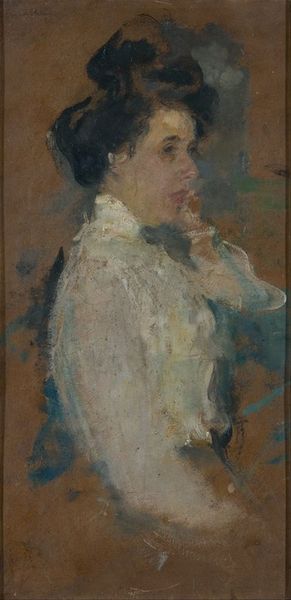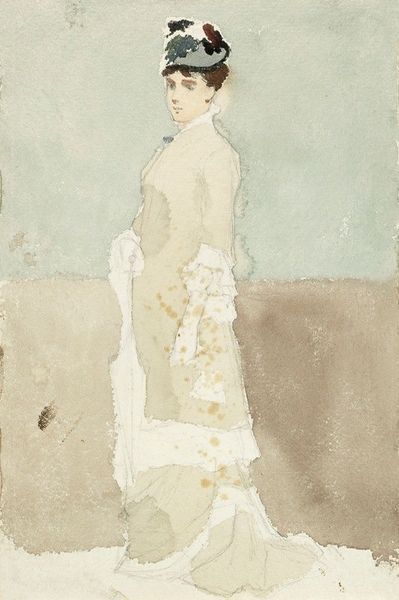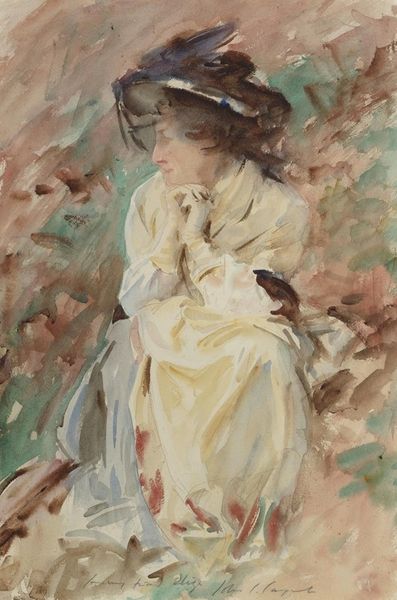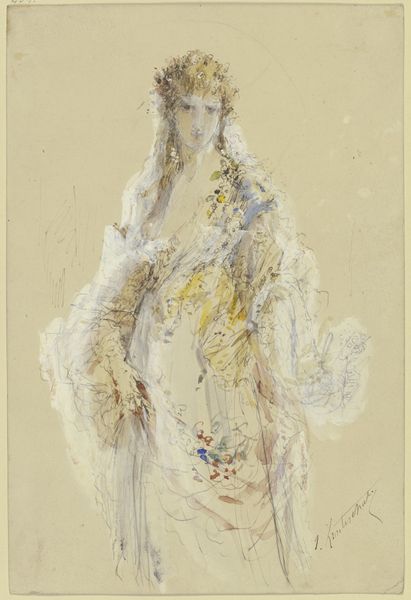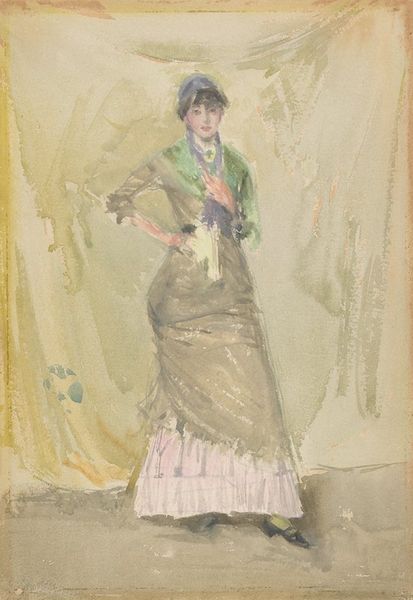
Copyright: Public domain
Editor: This is Mariano Fortuny Marsal's "Neapolitan woman (in ciociaro costume)," a watercolor from 1867. It feels like a snapshot, an intimate glimpse into the life of this woman. The soft washes give it an ethereal quality. What do you see in this piece? Curator: I see a carefully constructed identity, preserved in pigment. The “ciociaro costume” itself is laden with symbolism, referring to a specific region and a particular ideal of rustic Italian life, almost a nostalgic vision even in 1867. Consider how often images like this were reproduced and circulated – how does that affect our view, knowing that she is a stand-in for a whole region and its people? Editor: That’s fascinating. I hadn't considered the performative aspect of the costume. It seems like more than just everyday wear. Curator: Exactly! The bright reds of her sleeves and the meticulously rendered folds of the shawl create a carefully crafted visual message. What do you think those specific choices might suggest? Are they meant to evoke something particular? Editor: Maybe a sense of vitality or passion associated with the region? The red certainly pops against the muted background. So, it's not just a portrait of a woman, but a representation, almost a brand image of Neapolitan culture? Curator: Precisely! And, reflecting on the enduring power of visual symbols, consider how such images continue to shape our perceptions of place and identity even today. Editor: It's incredible how much cultural weight an image can carry. I'll never look at a portrait the same way again. Curator: Indeed. Recognizing these layered meanings allows us to engage more deeply with the art and the complex narratives it presents.
Comments
No comments
Be the first to comment and join the conversation on the ultimate creative platform.

